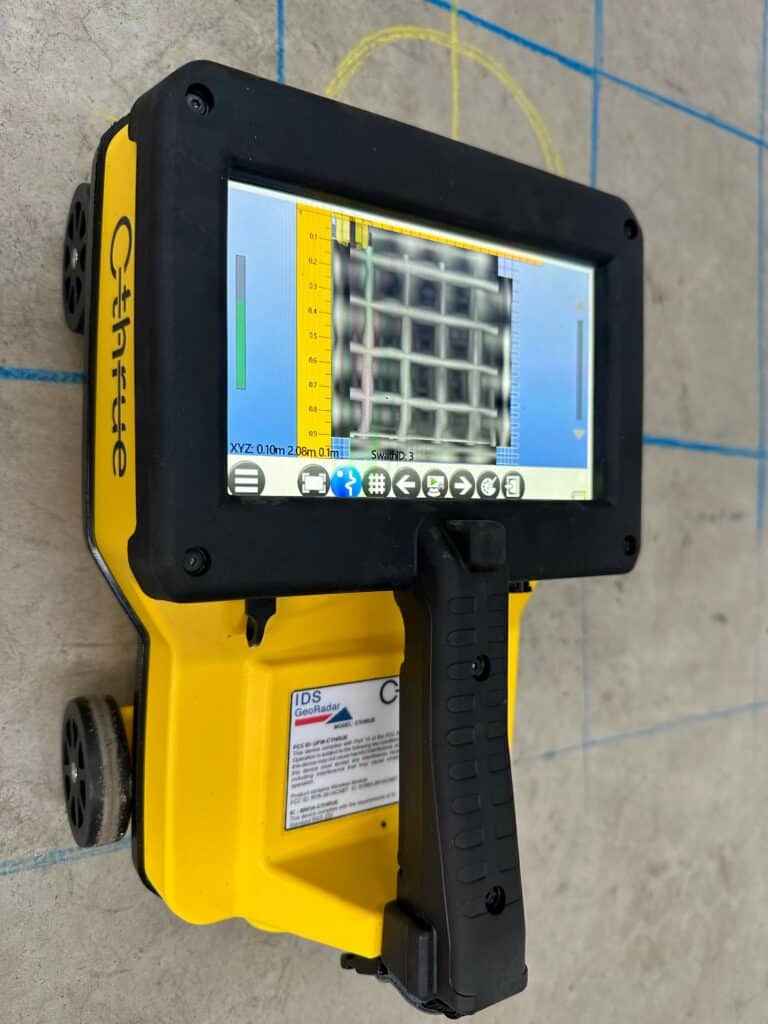Complete Overview to RainierGPR Concrete Scanning Techniques
Wiki Article
Discovering the Depths: A Comprehensive Guide to Concrete Scanning and Its Diverse Applications
In the realm of construction and facilities development, the meticulous procedure of concrete scanning holds an essential role in ensuring the architectural integrity and safety of tasks. As modern technology remains to progress, the applications of concrete scanning have actually broadened much past simple surface-level analyses. From finding rebar and post-tension cable televisions to drawing up channels and gaps hidden within concrete frameworks, the abilities of modern scanning strategies are both vital and outstanding. However, real deepness of concrete scanning's prospective reaches also better, branching into unforeseen markets and triggering ingenious solutions. The interconnected web of possibilities that concrete scanning provides is not just fascinating yet also critical for the development of numerous industries.Value of Concrete Scanning
Comprehending the significance of concrete scanning is important in guaranteeing the safety and stability of structures throughout building and renovation tasks. Concrete scanning utilizes sophisticated innovations such as ground-penetrating radar (GPR) and electromagnetic induction to detect ingrained items, gaps, or other abnormalities within concrete frameworks.Additionally, concrete scanning plays a critical role in guaranteeing conformity with building regulations and guidelines that mandate the security of existing structural components during construction tasks. By precisely mapping out the inner structure of concrete, scanning technologies make it possible for building and construction experts to make informed choices that support the structural security and durability of structures and infrastructure tasks. Fundamentally, the value of concrete scanning depends on its capacity to secure both the structural honesty and the workers associated with construction undertakings.
Technologies Utilized in Concrete Scanning
Concrete scanning depends on innovative innovations such as ground-penetrating radar (GPR) and electro-magnetic induction to accurately discover embedded things and anomalies within concrete frameworks. Ground-penetrating radar operates by discharging high-frequency electromagnetic waves into the concrete. When these waves experience various materials or gaps within the concrete, they get better to the surface, enabling the GPR system to create a comprehensive subsurface photo. This technology is especially efficient in situating rebar, post-tension cable televisions, conduits, and various other things embedded in concrete.Electro-magnetic induction, on the various other hand, functions by producing electro-magnetic areas around a concrete framework via a transmitter coil. When steel things are present within the concrete, they interfere with these magnetic fields, triggering eddy currents to move through the metal. By determining the adjustments in the magnetic fields with a receiver coil, the system can pinpoint the place of metal things in the concrete.
These cutting-edge technologies play an important duty in non-destructive screening, guaranteeing the security and honesty of concrete frameworks in various industries.
Applications in Construction Market
Within the construction industry, concrete scanning modern technology finds varied applications that enhance job performance and safety and security. In addition, concrete scanning is made use of for locating spaces, such as air pockets or locations of damage within concrete, which can jeopardize the total strength of a structure. Concrete scanning plays an important function in high quality control by validating the density of concrete covers over support, guaranteeing conformity with style specifications and requirements.
Safety And Security Advantages of Concrete Scanning
In the world of building safety and security, the application of concrete scanning innovation presents an extremely important advantage in preemptively identifying possible hazards and fortifying structural integrity. By making use of innovative scanning approaches such More about the author as ground-penetrating radar (GPR) and electro-magnetic induction, building teams can accurately situate rebar, post-tension cords, channels, and other covert things within concrete frameworks. This positive method considerably lowers the threat of unexpected strikes during drilling, cutting, or coring tasks, therefore protecting against costly damages, injuries, and task hold-ups.In addition, concrete scanning enhances worker safety and security by providing real-time info concerning the structural condition of concrete components. By addressing prospective security concerns without delay, concrete scanning adds to developing a safe functioning atmosphere and alleviating the chance of structural failures or accidents on have a peek here building websites.
Future Fads in Concrete Scanning
Emerging innovations in scanning modern technology are positioned to transform the field of concrete evaluation and analysis. By harnessing the power of AI, these systems can evaluate vast amounts of information gathered throughout scanning procedures to supply more in-depth and exact insights right into the condition of concrete structures.An additional significant pattern is the development of more straightforward and mobile scanning tools. Miniaturization of scanning equipment permits less complicated accessibility to restricted spaces and remote areas, making evaluations a lot more comprehensive and effective. Additionally, advancements in cordless communication technologies make it possible for real-time data transfer and evaluation, promoting quicker decision-making processes.
In addition, there is a growing concentrate on sustainability in concrete scanning innovations - RainierGPR Concrete Scanning. Makers are progressively incorporating eco-friendly products and energy-efficient functions right into their devices to minimize environmental influence. These future trends are readied to enhance the effectiveness, precision, and sustainability of concrete scanning practices, forming the industry's future landscape
Verdict
To conclude, concrete scanning plays an essential function in the building and construction industry by ensuring the safety and performance of their website numerous jobs. By making use of innovative modern technologies, such as GPR and radar imaging, professionals are able to properly spot prospective hazards within concrete frameworks. The applications of concrete scanning are vast and continue to progress, making it a vital device for preserving the honesty of structures and infrastructure. As technology breakthroughs, the future of concrete scanning holds appealing advancements for boosting building and construction procedures.

Report this wiki page